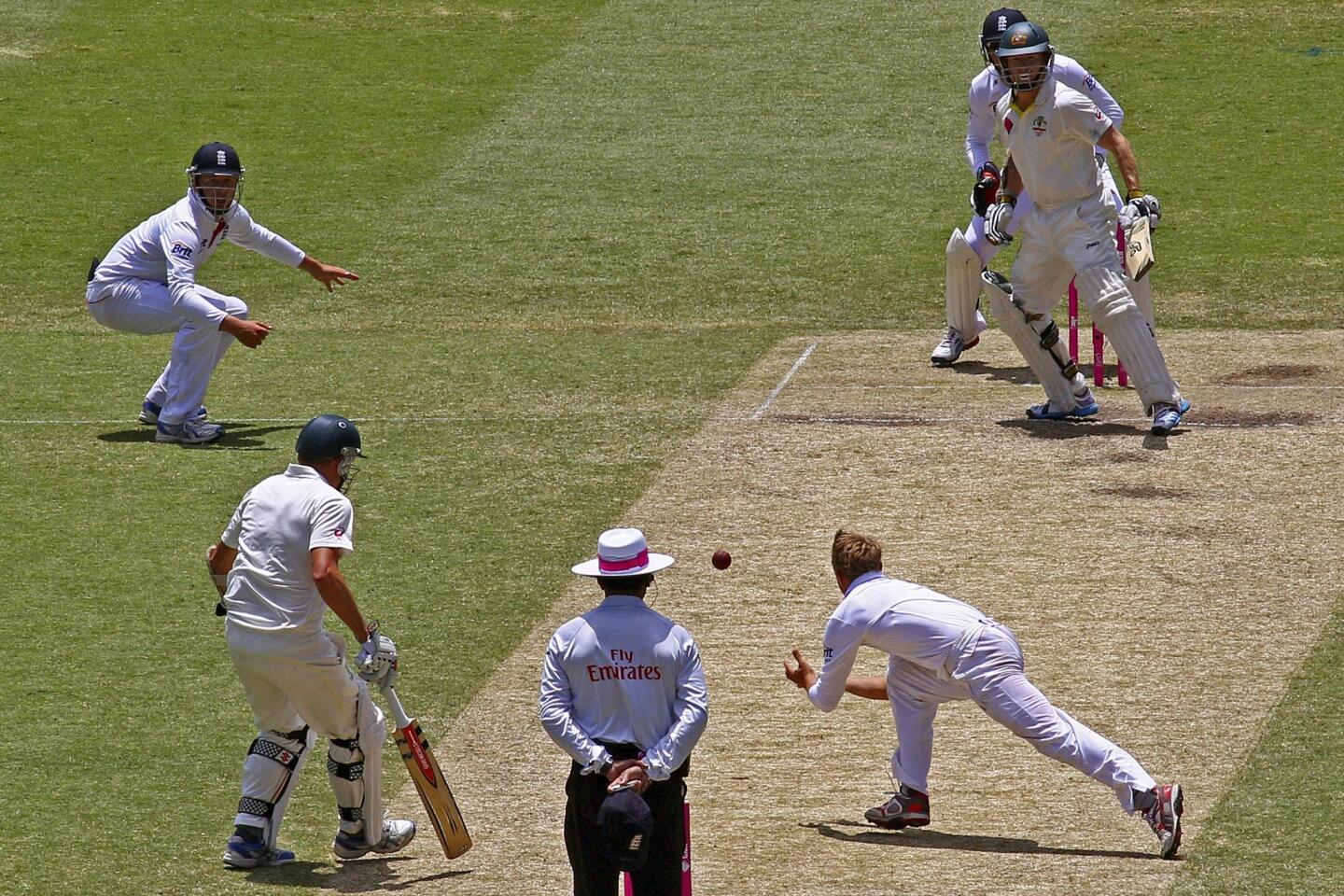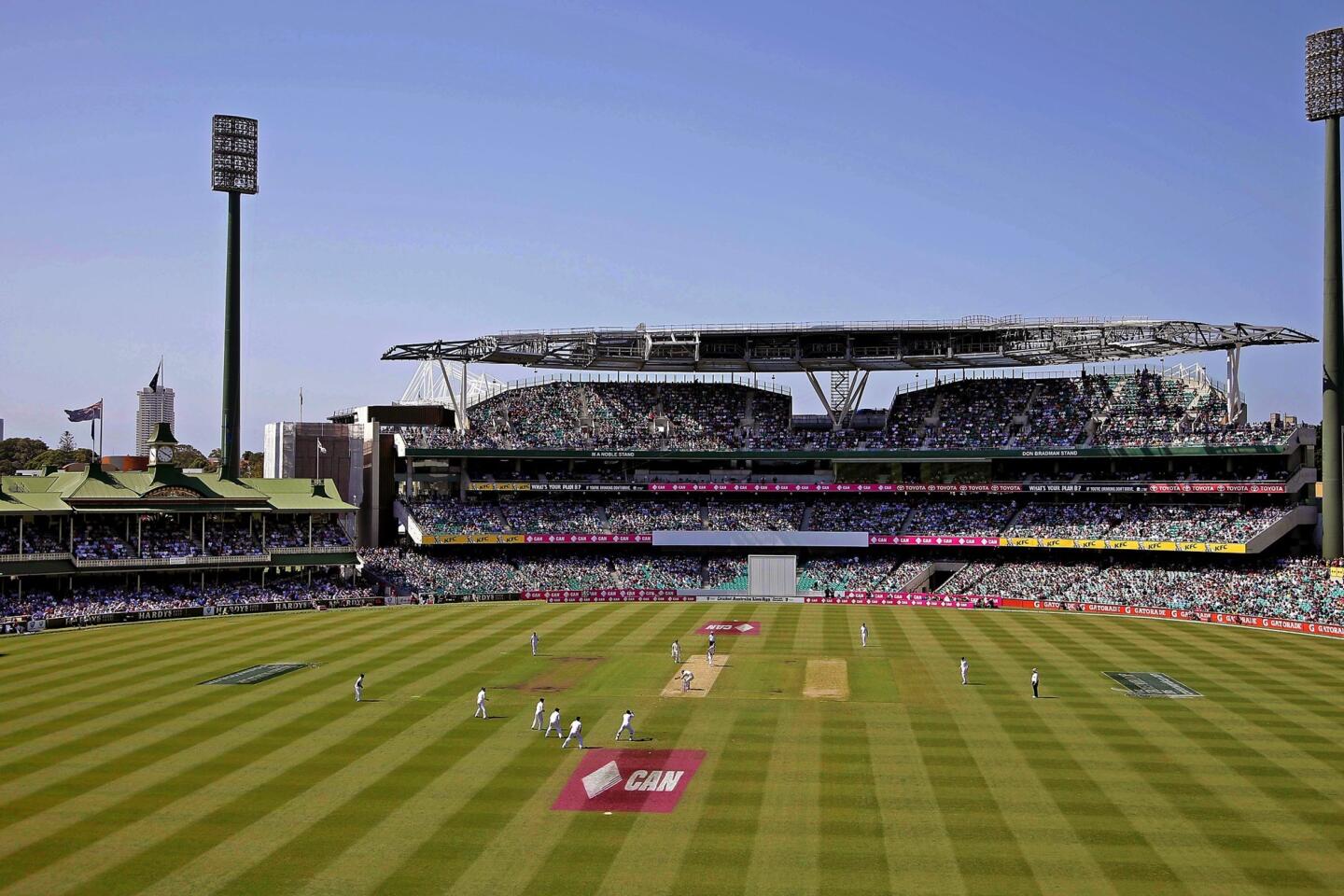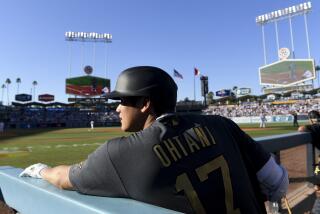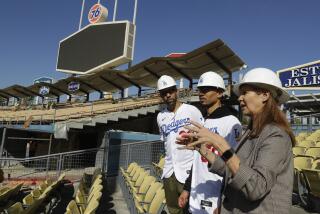Baseball, not cricket, in Australia? No sticky wicket for Dodgers
SYDNEY, Australia — The Los Angeles Dodgers’ season-opening series in Australia later this month takes place on some of the most hallowed sports turf in the world: the Sydney Cricket Ground. Just for comparison, baseball was being played at these cricket grounds almost 25 years before Fenway Park was built.
That’s right — baseball. The Sydney stadium, where the Dodgers and Arizona Diamondbacks kick off the Major League Baseball season March 22 and 23, is primarily a cricket venue, although rugby is played there as well.
Baseball’s roots in Sydney date to 1888, when the Chicago White Stockings (now the Cubs) played an exhibition led by pitcher and future sports-equipment baron Albert Spalding.
If you’re headed Down Under — or tagging along vicariously on TV — that’s just one of the nuggets you’ll need to know to appreciate a spectacle that blends the old with the new, including 30 vats of infield clay shipped from California.
“You read about the history of it, but when you walk in, you actually feel it,” said Dodger catcher A.J. Ellis, who had a preview visit in November. “I mean, even the lushness of the grass is impressive. The field crew does a really great job on it.
“You step back and you can tell the footprint from 100 years, then you can see the upgrades. It’s really a spectacular place.”
It will take some doing to get the historic stadium game ready. To meet major league specs, it must be reshaped, re-seeded and re-thought — a conversion now underway.
When work started, there were no dugouts or bullpen areas. A new home-run wall, meeting MLB standards, is being constructed. The infield was laid out and leveled last fall, giving the grounds crew a head start on the current work.
The project has been in the planning stages for 16 months, said MLB field guru Murray Cook.
“We’ve got a lot to do,” said Cook, but he raves about the Aussie crew and supervisor Tom Parker. He also noted that the cricket stadium’s equipment includes a roller that dates to 1902.
“It looks like a Model T,” Cook said with a chuckle.
Though it boasts that rich 160-year history, the 48,000-seat Sydney Cricket Ground offers a mostly modern spectator experience. Stadium execs like to brag about the pixels in the giant video screen, though that’s standard stuff for today’s sports venues.
More striking is the vintage Victorian clubhouse, running behind home plate and to first base, that adds a 19th century aura. That clubhouse is to the Sydney Cricket Ground what outfield ivy is to Chicago’s Wrigley Field.
“The cricket players love that place,” Ellis said of the clubhouse area.
The stadium, set in Moore Park, is a 10-minute cab ride (30 at rush hour) from Sydney Harbour. For fans looking for pre- and post-game activities, the entertainment district around the stadium offers pubs and restaurants. Next door, duck ponds dot a sprawling park.
Maybe a baseball game in such a venue isn’t as odd as it seems. The cricket tie-in is fitting because the sport shares some baseball chromosomes. Cricket is played in innings, and teams are divided between batters (“batsmen” in cricket) and pitchers (“bowlers,” though the cricket ball is flung overhand at speeds up to 100 mph).
Two domestic cricket teams play at these grounds during a season that generally runs from October until March. (Remember, the seasons are the reverse of ours.)
So what will a baseball game among Aussies be like?
The grub will be familiar. General Manager Patrick Wilson said his venue will provide special baseball-themed menus that include foot-long hot dogs, peanuts, nachos and burgers; strolling vendors will fling peanuts and pour beer.
Cricket fans are generally knowledgeable and attentive, said American sportswriter Chris Teale, who has written extensively on the sport. “As you can imagine, things can get pretty rowdy once the drinks start flowing and play has been going on for several hours,” Teale reported. “But any incidents of violence are incredibly rare.”
Game on.
More to Read
Sign up for The Wild
We’ll help you find the best places to hike, bike and run, as well as the perfect silent spots for meditation and yoga.
You may occasionally receive promotional content from the Los Angeles Times.









